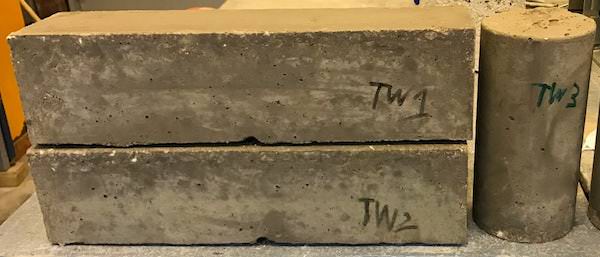
[Image above] Credit: University of Exeter, Dimitar Dimov
Let’s face it, concrete is not the most environmentally friendly material.
The cement industry is responsible for approximately 5% of global CO2 emissions, according to an article from Columbia University. The Portland Cement Association predicts a 2.8% growth in cement consumption in 2018 and 2019 and is expected to increase to 4% in 2020.
Concrete impacts the environment in many ways, according to this chart. And researchers continue to explore ways of making it greener, like taking advantage of defects in this study and using nature as inspiration for modifying cement in this research.
However, in new research, scientists from the University of Exeter (Exeter, U.K.) have developed a process for producing concrete that incorporates graphene at the nanoscale. The new concrete is “more than twice as strong and four times more water resistant than existing concretes,” according to a University of Exeter news release.
The process involves suspending atomically thin graphene in water. The researchers report “an unprecedented range of enhanced properties when compared to standard concrete” in the paper’s abstract. They also report a 146% increase in compressive and 79.5% in flexural strength and enhanced electrical and thermal performance—and a significant decrease in water permeability compared with traditional concrete.
“Our cities face a growing pressure from global challenges on pollution, sustainable urbanization and resilience to catastrophic natural events, amongst others,” professor in nanoscience and nanotechnology Monica Craciun says in the release.
“This new composite material is an absolute game-changer in terms of reinforcing traditional concrete to meets these needs,” she adds. “Not only is it stronger and more durable, but it is also more resistant to water, making it uniquely suitable for construction in areas which require maintenance work and are difficult to be accessed.”
Craciun, who has studied the use of graphene and other 2-D materials for a number of applications in past research, says that using graphene reduces the number of materials that go into making concrete by up to 50%, which could significantly reduce carbon emissions.
Their modified concrete could reduce carbon emissions of traditional concrete production methods and has already passed British and European construction standards.
The paper, published in Advanced Functional Materials, is “Ultrahigh Performance Nanoengineered Graphene–Concrete Composites for Multifunctional Applications” (DOI: 10.1002/adfm.201705183).
Are you a researcher focused on cement materials? Learn what fellow researchers are up to at the 9thAdvances in Cement-Based Materials (Cements 2018), June 11–12 at Pennsylvania State University (State College, Pa.) Visit this link to learn more and to register.
